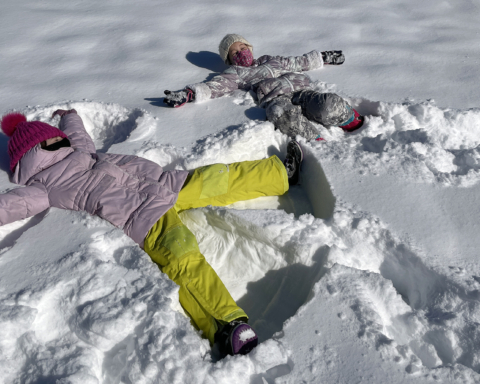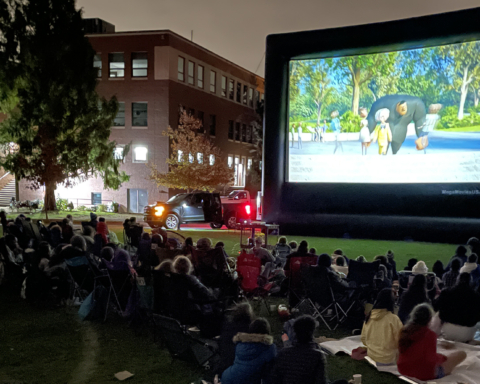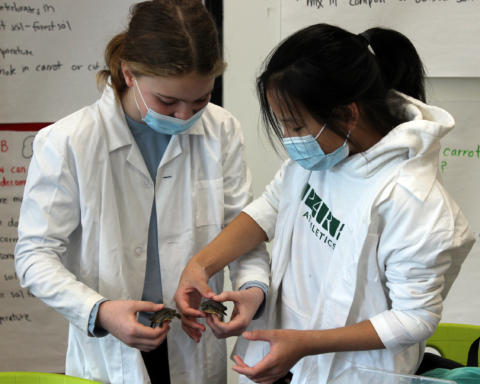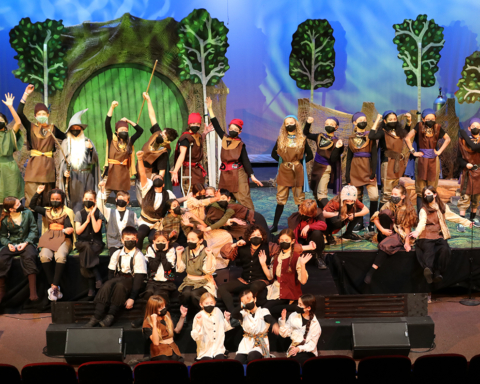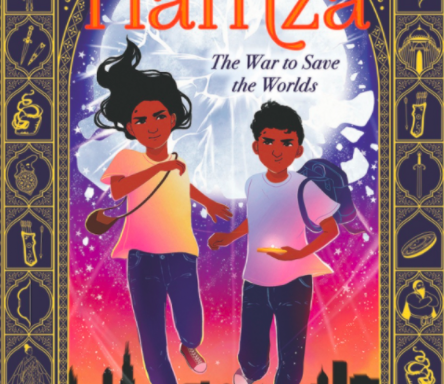If you enter a Lower Division math class at Park, you are likely to see students puzzling through a variety of different activities. Maybe the teacher has posed the question, “Which one doesn’t belong?” with this image  (right): You may hear answers ranging from “9, because it’s the only one digit number, “43, since it’s the only non-square number,” or “9 because it’s the only number whose digits don’t sum to 7.”
(right): You may hear answers ranging from “9, because it’s the only one digit number, “43, since it’s the only non-square number,” or “9 because it’s the only number whose digits don’t sum to 7.”
Or you may see a class brainstorming questions that they need the answer to in order to estimate how many Krispy Kreme donuts are in this huge box  :
:
Park’s approach to math is inquiry-based learning. The teacher poses a problem, and facilitates a discussion; the students are the leaders of the conversation. Through guided discussions, students discover patterns and relationships with numbers.

First graders may discover, through the use of visuals such as ten frames (above), that 7+8 is the same as 10+5 (add 3 to the 7 and take away 3 from the 8 to make an equivalent, but easier, addition fact).
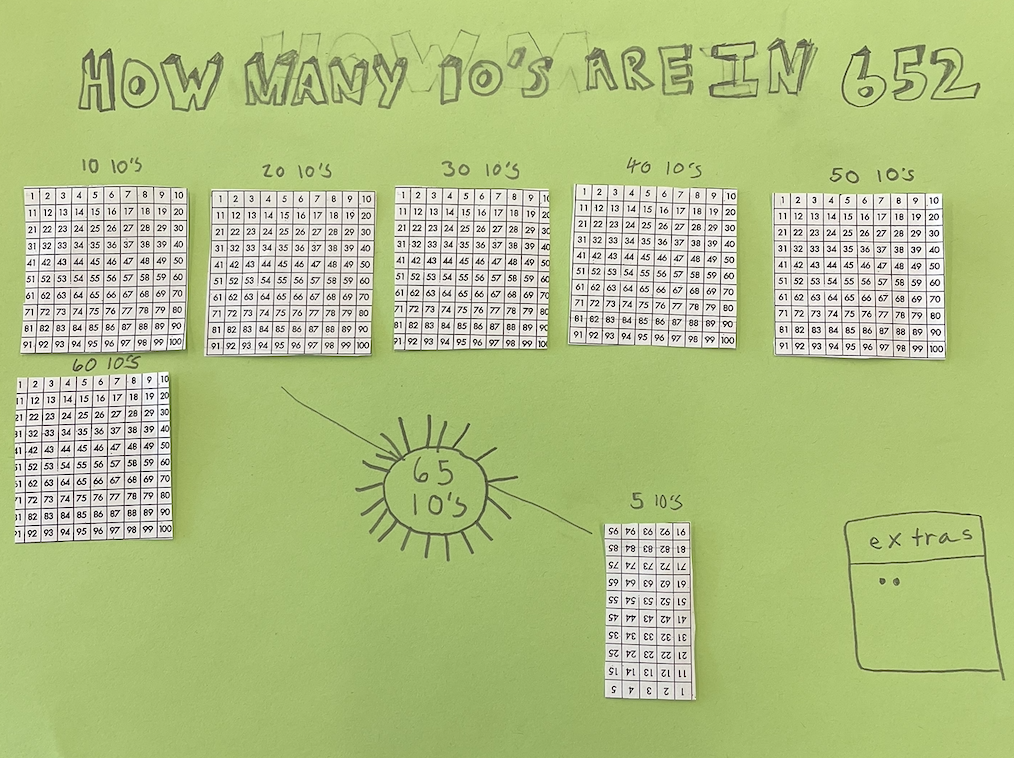 Third graders discover that there are 73 tens in 732 by cutting up hundreds charts (above). And, fourth graders are asked if the factors of 100 are also factors of 200 and 300, then are asked if their conjectures apply to other related numbers, like 36 and 72.
Third graders discover that there are 73 tens in 732 by cutting up hundreds charts (above). And, fourth graders are asked if the factors of 100 are also factors of 200 and 300, then are asked if their conjectures apply to other related numbers, like 36 and 72.
The lessons are carefully planned to include high interest activities or projects, with a low floor (accessible to all students) and high ceiling (multiple solutions or extensions that will enrich the students with the strongest math backgrounds). Hands-on activities and real life extensions are a main component of math instruction at Park. Students in Grade 4 are invited to imagine being a WNBA coach. They look at actual data from WNBA superstars, evaluate the mode, median, mean and range from the player’s scores from the season to determine who they would want on their team. Rich discussions are encouraged as classmates debate who they would draft and why.
Cross-curricular math lessons are valuable to help students understand that math is not learned in a silo. This fall in science, third graders are learning about Newton’s second law of motion. They will be building model cars and see which configuration makes the car travel the farthest down a ramp. In math, students will be looking at the relationship between force, mass and acceleration, and making predictions about what will happen if they add a certain weight to their car. What will happen if the weight on the car is doubled? The students will be able to test their predictions in science class and bring their data back to math to evaluate their hypotheses and the data they collected as a class.
Math learning can be supported at home through a variety of different methods. Estimation is a skill that can be reinforced (even when you’re at the grocery store!) through questions like, “How many oranges do you think are in this pile?” Regardless of the answer your child provides, you can ask clarifying questions, including: “How did you figure that out?” or “What information could help us find a very close estimate?”
Watching sports games is also a great way to practice math skills. You can ask questions, including, “How many points is team A ahead of the other team by?” or “If the Patriots get this touchdown, how many points will they have?” You and your child can also predict the final score of the game and keep track of how many more points the team needs in order to reach your prediction.
Playing board games with your child also is a great way to support math at home. For example, Chutes and Ladders reinforces addition skills, Candy Land reinforces counting, colors, and doubles, Catan or Risk require a lot of strategic planning in order to win the game.
In working with my Lower Division colleagues in helping shape and support the math curriculum my ultimate goal for students is to develop a deep understanding of the concepts they are learning. I want students to develop flexible thinking; there are often many ways to arrive at a solution, and if you know more than one strategy, you can apply the most efficient strategy for the given situation.
Lastly, and most importantly, I want students to be excited about learning math. A passion for learning math has to be fostered starting at an early age with activities and projects that are challenging, yet attainable. Park students are given a wide array of opportunities to develop and strengthen their mathematical thinking and problem-solving skills, while experiencing the joy of learning.

